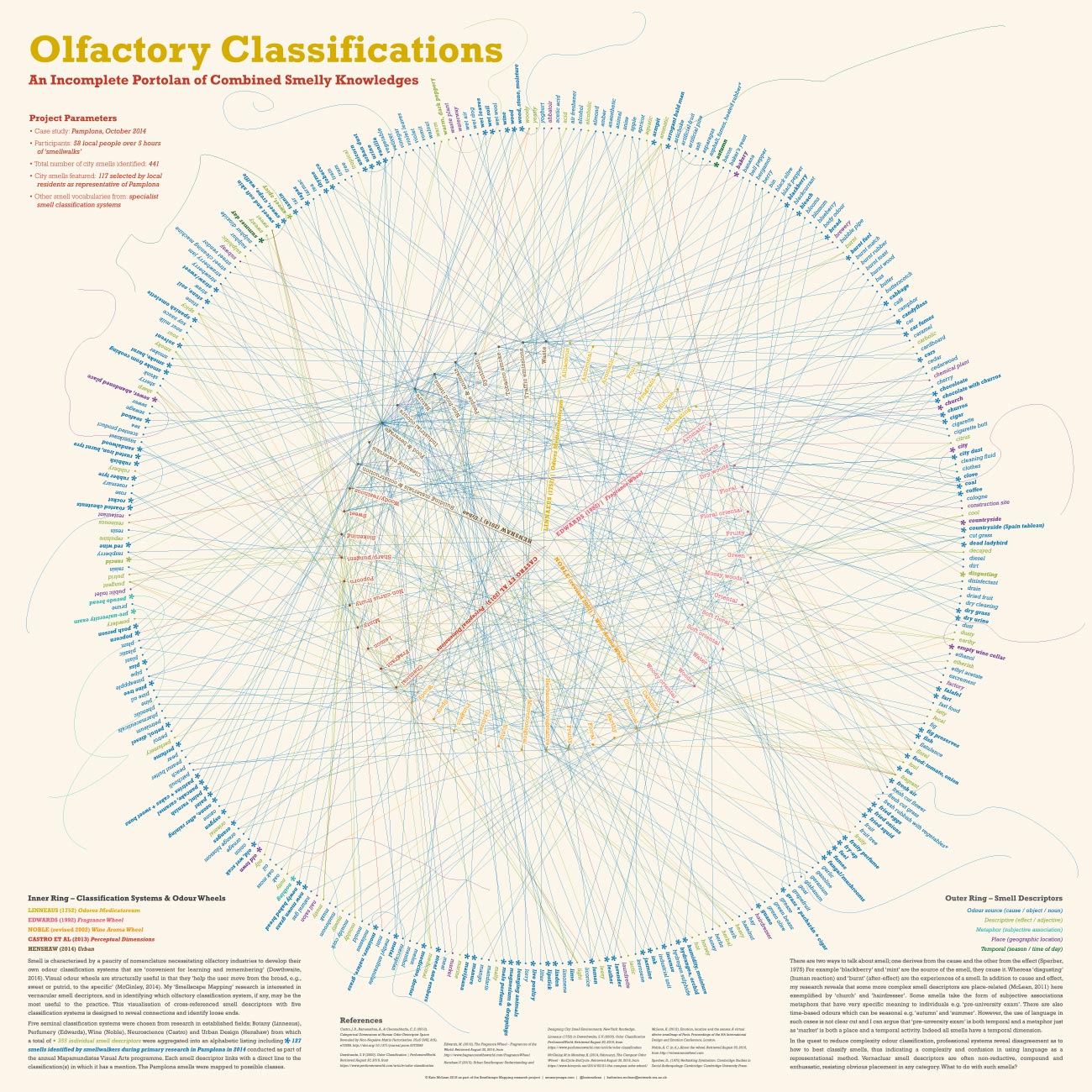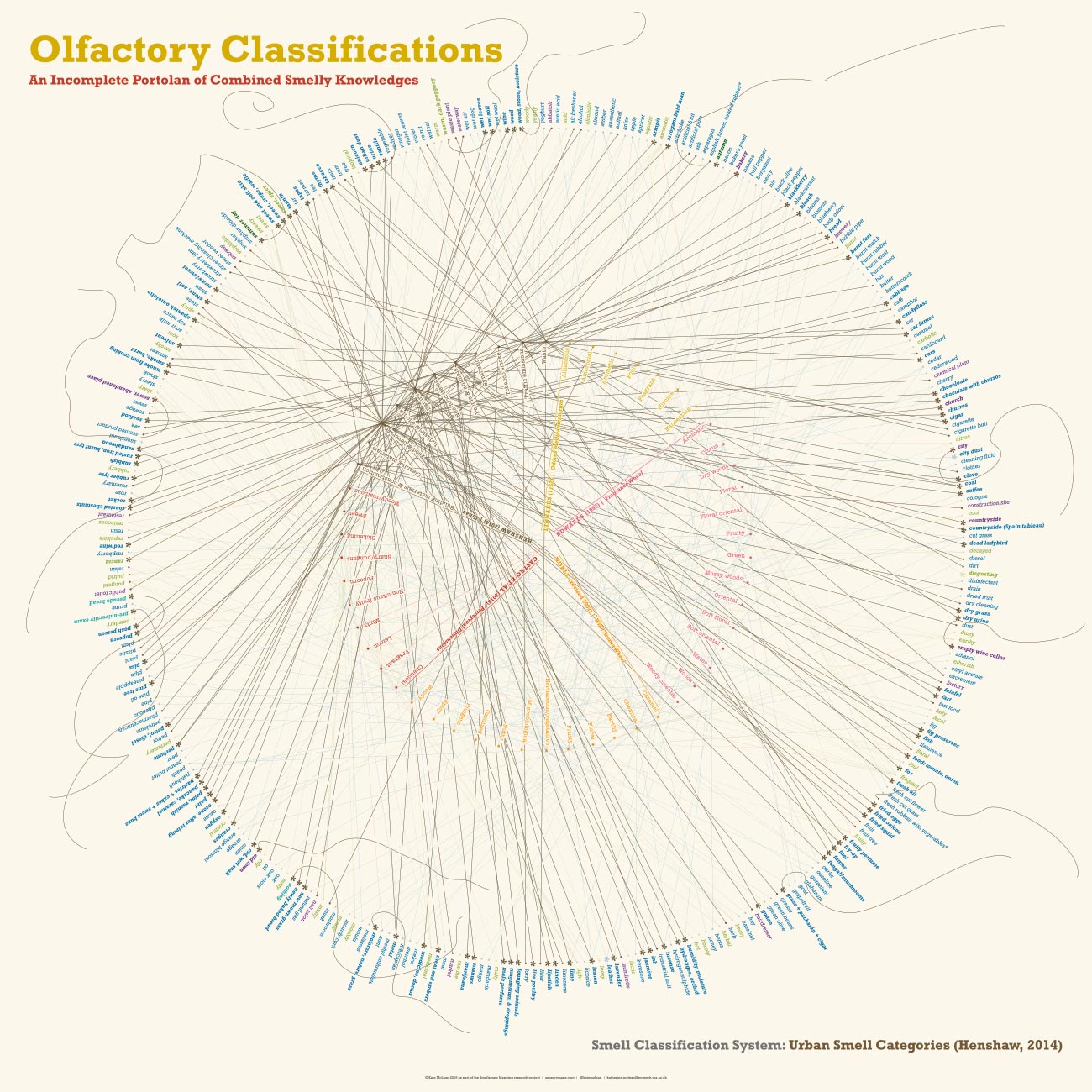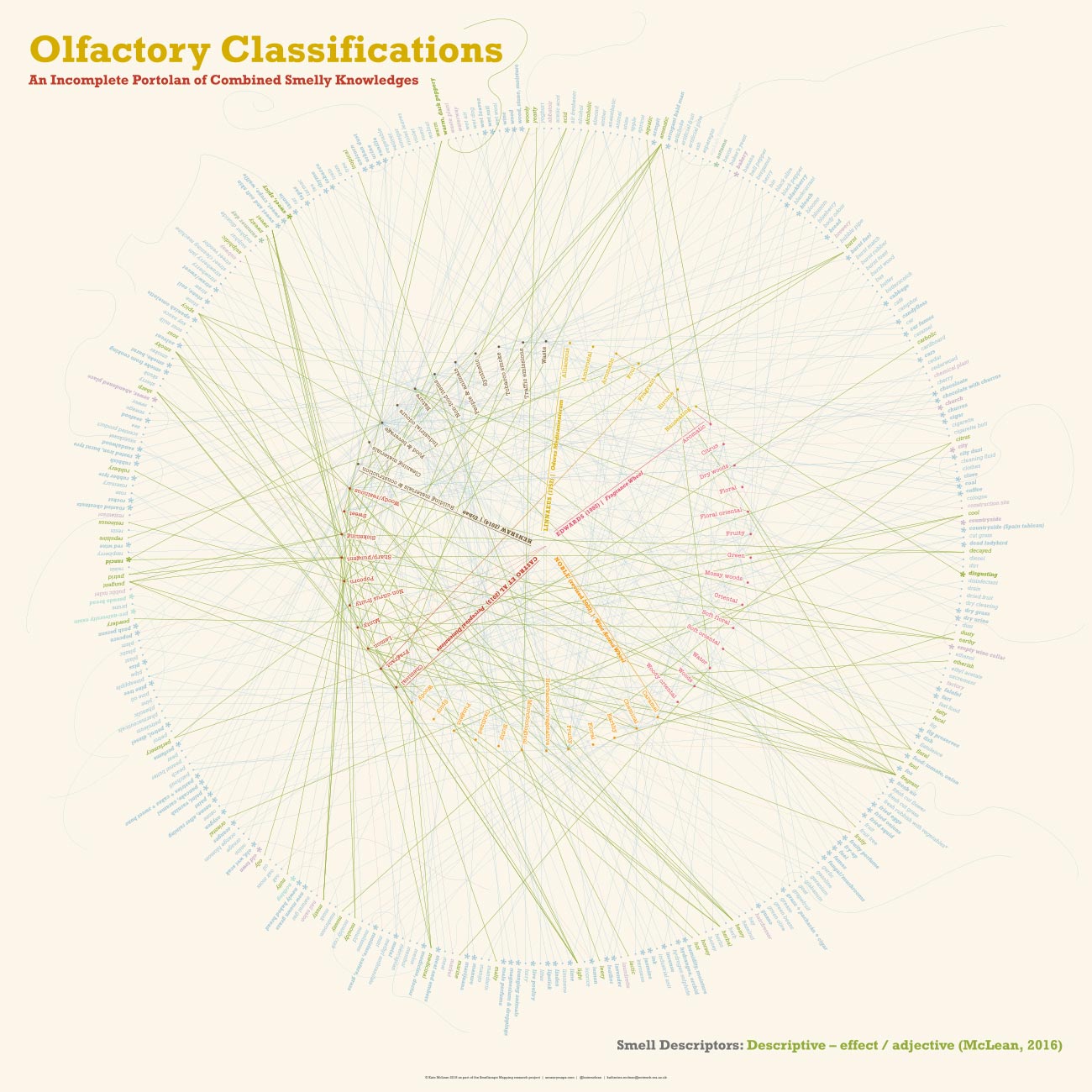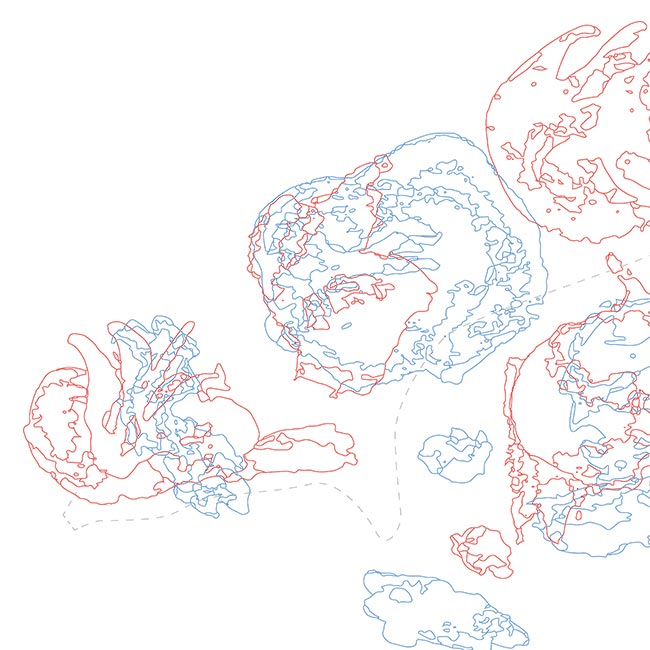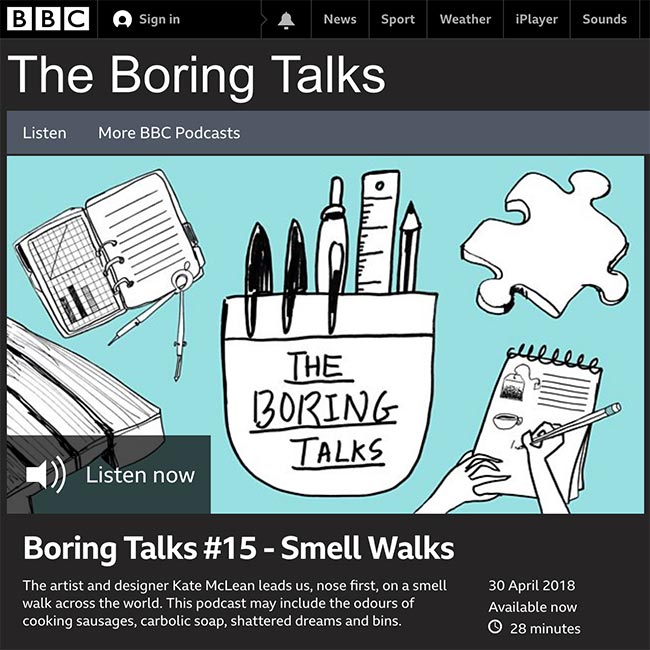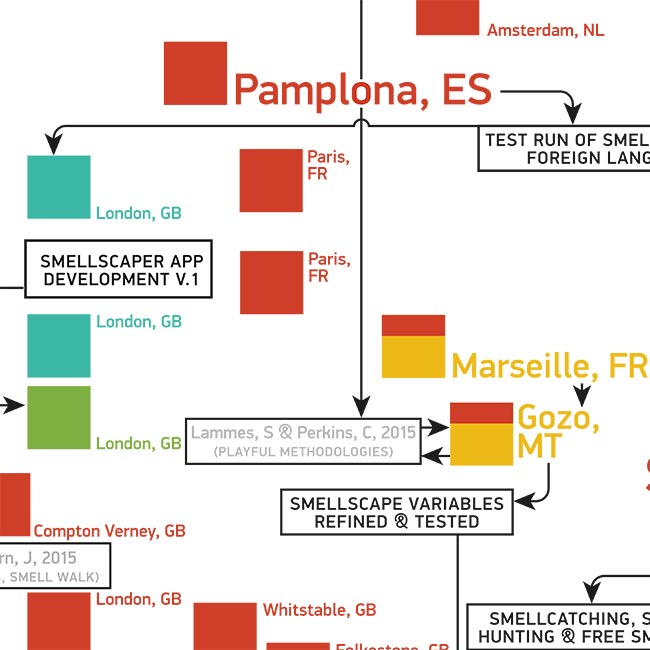26: Comparative Smell Vocabularies
This segmented radial convergence diagram can be used to facilitate interrogation of how smell vocabularies are shared between different classification systems.
Using words from 5 disciplines combined with human-perceived smells verbatim (from one of my site-specific research projects smellwalking and smellmapping in Pamplona) the diagram suggests how the smells might be categorised according to specialist aroma wheels and classification systems. Cross-referencing expert olfactory terminologies from different disciplines reveals a complexity and confusion in labelling smells, leaves some smells without ‘homes’ and indicates a need for alternative strategies when representing the urban vernacular smellscape.
- Inner Ring – Systems & Odour Wheels
- LINNEAUS (1752) Odores Medicamentorum
- EDWARDS (1992) Fragrance Wheel
- NOBLE (revised 2002) Wine Aroma Wheel
- CASTRO ET AL (2013)
- Perceptual Dimensions
- HENSHAW (2014) Urban
- Outer Ring – Smell Descriptors
- Odour source (cause / object / noun)
- Descriptive (effect / adjective)
- Metaphor (subjective association)
- Place (geographic location)
- Temporal (season / time of day)
Date: 2016
- Category: Personal Project, Rest of World
Media & size: Digital print, 1000mm x 1000mm
Exhibited:
2017 – “Communicating the Intangible”, Royal College of Art
